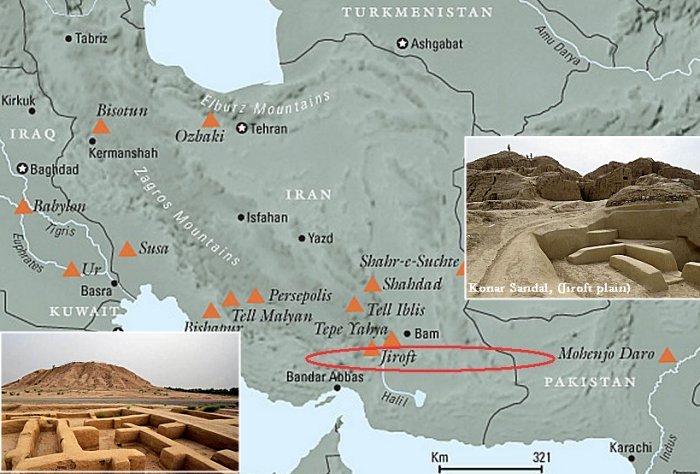Jiroft’s Konar Sandal – Home To A Huge Ziggurat And Many Ancient Treasures
Angela Sutherland - AncientPages.com - More than a hundred historical sites are recognized in the basin of a 400 kilometer stretch of Halil-Rud River in the south of Kerman province, a historically and archaeologically significant region of Iran.
Among these places of a high cultural value, Konar Sandal is a Bronze Age archaeological site situated just south of Jiroft, Kermān Province, Iran. The Konar Sandal has many treasures, which we mention later in this article. First of all, the site has a ziggurat-like structure. It is today known as the Konar Sandal Ziggurat.
Before the discovery of the ziggurat in 2002, Chogha Zanbil, a significant leftover of the Elamite civilization near Susa, was the only surviving ziggurat in Iran. Built about 1250 BC during the Middle Elamite Period (c. 1500 – c. 1100 BC) by king Untash-Napirisha, to honor Sumerian god Inshushinak, Chogha Zanbil ziggurat has long remained the only still existing structure of this type
Yusef Majidzadeh, the director of the archaeological team working at the site, led excavations in the region for more than two decades. He said that the central part of the Konar Sandal Ziggurat is the lower part and is 200 years older than the upper section. Thus, the construction of the ziggurat was carried out in stages beginning in 2200 BC, and now, archaeologists have determined the original shape of the Konar Sandal Ziggurat. It will make the restoration of the ziggurat much easier.
Stone vessel, architectural decoration, Jiroft, Kerman, Iran. Image source
Two superimposed platforms are located on the mound of Konar Sandal North. The upper structure measures 150 x 150 m, and the lower 300 x 300 m. These measurements help us imagine that this gigantic ziggurat covered almost the whole mound and was constructed of more than four million mud bricks. There are still questions regarding the Konar Sandal Ziggurat, and particularly, the large platforms that form a stepped massif and resemble the ziggurats of Mesopotamia.
Also interesting, although not precisely explained, is a two-story citadel with a base covering approximately 13.5 hectares (33 acres) and surrounded by a fortress wall, which is 10.5 meters (34′) thick. While the ziggurat is a pyramid-like structure consisting of tiered platforms, a citadel, on the other hand, suggests a fortified building.
Jiroft - with more than a hundred historical sites - has ruins and artifacts dating back to the third millennium BC. Both Yusef Majidzadeh many other experts from Iran and abroad consider that the archaeological findings in Jiroft shed light on the so-called “Jiroft civilization” that existed between Mesopotamia and Indus valley and dated back to 3000 BC. They believe that Jiroft was the ancient city of Aratta, described as a great civilization in a Sumerian clay inscription.
Probably, it was an independent Bronze Age civilization with its own architecture and language, and the ruins may be the remains of the lost Aratta Kingdom.
Konar Sandal artifacts. source
However, the exact location of this civilization is unclear. Some scholars believe that Aratta was situated in Jiroft, but others suggest the kingdom was located in Azerbaijan, Baluchistan, or even the Gulf.
A New Writing System Discovered At The Site Of Konar Sandal
A few years ago, a new writing system probably dated to the second half of 3000 BC was unearthed at the site of Konar Sandal.
Three of them represent a Linear Elamite inscription and a second inscription with unknown signs dubbed as ‘Geometric.’ The fourth tablet remains enigmatic. However, according to scientists, the analyzed geometric signs dated to 3000 BC suggest that they may be musical scores.
In our article “Is Mysterious Prehistoric Jiroft The Legendary Land Of Aratta? we write that “many valuable objects, including two clay inscriptions carrying the oldest human scripts, have been unearthed during authorized excavations in the region.
Numerous fascinating artifacts unearthed at the site are of great value. There are two remarkable stone reliefs unearthed in the Konar Sandal. They are carved on soapstones and depict two men with human faces and snake bodies instead of legs.
Still, not much is known about this region of Iran. Excavations carried out from 2006 to 2009 revealed the remains of three settlements dated to 4000 BC. Even more, artworks were unearthed in 2014, and these finds attest that the ancient people of this region had not one but several writing systems.
Written by – A. Sutherland - AncientPages.com Senior Staff Writer
Copyright © AncientPages.com All rights reserved. This material may not be published, broadcast, rewritten or redistributed in whole or part without the express written permission of AncientPages.com
Expand for referencesReferences:
More From Ancient Pages
-
 Surprising Discovery: Massive Cemetery Built 5,000 Years Ago Near Lake Turkana, Kenya
Archaeology | Aug 24, 2018
Surprising Discovery: Massive Cemetery Built 5,000 Years Ago Near Lake Turkana, Kenya
Archaeology | Aug 24, 2018 -
 Intriguing El Tajin – Pre-Hispanic Ceremonial Site Dedicated To Totonac Rain God
Featured Stories | Jul 17, 2016
Intriguing El Tajin – Pre-Hispanic Ceremonial Site Dedicated To Totonac Rain God
Featured Stories | Jul 17, 2016 -
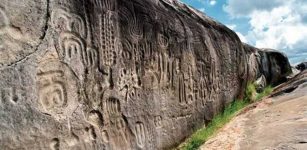 Unsolved Enigma Of The Inga Stone And Its Mysterious Ancient Undeciphered Signs
Artifacts | Jan 18, 2015
Unsolved Enigma Of The Inga Stone And Its Mysterious Ancient Undeciphered Signs
Artifacts | Jan 18, 2015 -
 World’s Oldest Paycheck Reveals Ancient Sumerian Workers Were Paid In Beer
Ancient History Facts | Nov 22, 2018
World’s Oldest Paycheck Reveals Ancient Sumerian Workers Were Paid In Beer
Ancient History Facts | Nov 22, 2018 -
 17th Century Medical Pop-Up Book Digitized
Archaeology | Jan 16, 2016
17th Century Medical Pop-Up Book Digitized
Archaeology | Jan 16, 2016 -
 Hazelnuts -‘Time Capsule’ To Reconstruct Landscape Of Ancient Forests In Sweden
Archaeology | Mar 5, 2024
Hazelnuts -‘Time Capsule’ To Reconstruct Landscape Of Ancient Forests In Sweden
Archaeology | Mar 5, 2024 -
 Sweden’s Blue Maiden ‘Blåkulla’ Island – Mythical Place With Dark Secrets Of Witches And Wizardry
Places | Sep 23, 2015
Sweden’s Blue Maiden ‘Blåkulla’ Island – Mythical Place With Dark Secrets Of Witches And Wizardry
Places | Sep 23, 2015 -
 Knowledge Of Divine Alien Beings And High-Tech In Ancient Egypt Described In Sacred Books And Papyrus – Reincarnation, Cloaking Technology And Space Travel – Part 2
Ancient Mysteries | May 16, 2021
Knowledge Of Divine Alien Beings And High-Tech In Ancient Egypt Described In Sacred Books And Papyrus – Reincarnation, Cloaking Technology And Space Travel – Part 2
Ancient Mysteries | May 16, 2021 -
 What Can Grinding Stones Reveal About Europe’s Earliest Neolithic Communities?
Archaeology | Feb 28, 2025
What Can Grinding Stones Reveal About Europe’s Earliest Neolithic Communities?
Archaeology | Feb 28, 2025 -
 Incredible Ancient Metallurgical Wonders That Defy Explanation And Pose A Real Mystery Even Today
Civilizations | Apr 21, 2014
Incredible Ancient Metallurgical Wonders That Defy Explanation And Pose A Real Mystery Even Today
Civilizations | Apr 21, 2014 -
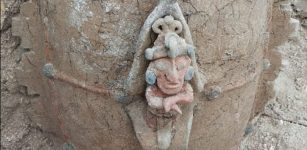 Funerary Urn Depicting The God Of Corn Unearthed In Mexico By INAH Archaeologists
Archaeology | Jan 11, 2024
Funerary Urn Depicting The God Of Corn Unearthed In Mexico By INAH Archaeologists
Archaeology | Jan 11, 2024 -
 Agriculture In North America Led To Changes In Age-Independent Mortality
Archaeology | Jan 24, 2023
Agriculture In North America Led To Changes In Age-Independent Mortality
Archaeology | Jan 24, 2023 -
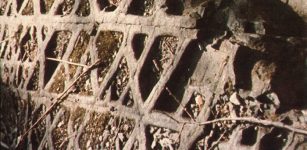 America’s Mysterious Waffle Rock Formation
Featured Stories | Apr 15, 2014
America’s Mysterious Waffle Rock Formation
Featured Stories | Apr 15, 2014 -
 Oldest Case Of A Rare Genetic Condition Discovered
Archaeology | Aug 27, 2022
Oldest Case Of A Rare Genetic Condition Discovered
Archaeology | Aug 27, 2022 -
 Evidence Of An Unknown Ancient Civilization In The Yucatan?
Featured Stories | Apr 6, 2024
Evidence Of An Unknown Ancient Civilization In The Yucatan?
Featured Stories | Apr 6, 2024 -
 Denisovan DNA May Explain Why Tibetan Women Thrive In Low Oxygen At High Altitudes For Over 10,000 Years
DNA | Nov 18, 2024
Denisovan DNA May Explain Why Tibetan Women Thrive In Low Oxygen At High Altitudes For Over 10,000 Years
DNA | Nov 18, 2024 -
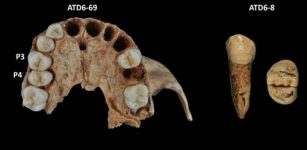 Neanderthals Are Not The Only Species Whose Dentition Is Characterized By The Possession Of Thin Enamel
Archaeology | Jan 19, 2023
Neanderthals Are Not The Only Species Whose Dentition Is Characterized By The Possession Of Thin Enamel
Archaeology | Jan 19, 2023 -
 Ancient Bayanihan Tradition Of The Filipino People: Villagers Move Your Entire House Including Walls And Roof
Ancient Traditions And Customs | Sep 6, 2018
Ancient Bayanihan Tradition Of The Filipino People: Villagers Move Your Entire House Including Walls And Roof
Ancient Traditions And Customs | Sep 6, 2018 -
 Acta Diurna: World’s First Newspaper Appeared In 131 B.C
Ancient History Facts | Jun 10, 2019
Acta Diurna: World’s First Newspaper Appeared In 131 B.C
Ancient History Facts | Jun 10, 2019 -
 During Tough Times Ancient ‘Tourists’ Sought Solace In Florida Oyster Feasts
Archaeology | May 4, 2020
During Tough Times Ancient ‘Tourists’ Sought Solace In Florida Oyster Feasts
Archaeology | May 4, 2020

